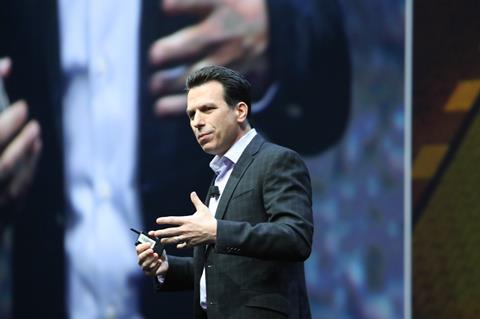Andrew Anagnost, CEO at Autodesk, spoke to ��ɫ����TV on the rise of automated decision making, how modular construction can still look unique, and how giving the next generation the opportunity to do things differently could help to transform the industry

Over the last five years, one of the biggest things to have happened has been the rise of BIM as a more standardised approach to specifying and building things. It was within the last five years that the UK BIM mandate came down – 2016, so you’re seeing more and more of these BIM-focussed mandates, and BIM-focussed processes rising up in the building space. It’s an important pre-cursor to actually changing the entire construction market, because without moving to model-based processes, it’s very difficult to fully industrialise construction. Most manufacturing is already dependent on 3D models to actually drive the entire process.
On automation:
The more we can do with the computer to help people make good decisions, the more time they can spend making the higher-value decisions. Our ultimate goal is to essentially generate the construction model for the user. Right now, they build it because they get such a return from having it, but would they rather be doing something else than building the model? You bet they’d rather be doing something else.
On wasted resource:
There are, in the construction business in particular, a lot of incentives for people to do the wrong thing. Some construction companies actually make more money having to redo something than they do if they do it all right the first time. So it’s not just about deploying the technology to help people do things, it’s also about changing the ecosystem they operate in, so there are strong incentives to build it right, build it digital, build it to spec the first time – not go back and fix it over and over again.
On the next generation:
Someone with a construction management degree or focus might have got trained in this nirvana of how things should work, and then they collide with the real world. I’m really concerned about how we maintain momentum for people coming out of school with new thoughts about how to do things. We need to encourage them, nurture them, ensure a space for them to take on a project end-to-end, maybe a small one, a low-risk one, and actually do it differently.
On modular construction:
It’s possible to do things that look different, look unique, but have skeletal elements underneath them that are common and reusable. Cars do this all the time. If you look at BMW and Audi, you’ll hear them talk about platforms. The cars look very different, but the chassis, even some of the components that make it up, are the same.
On construction’s unwillingness to change:
It’s notoriously slow, but can we afford for it to be this slow? I’m just not sure we can afford it any more. I really do believe this capacity problem that I keep talking about - it’s a real problem. People are worried about the jobs - we actually don’t have enough people to do what we need to do right now, and enough money. So I really do worry about it taking us 20 years. If there was anything we can all do together to make it 10 years, that would be awesome.
On the increasing demand on urban space:
There’s really social fabric at stake here. Every urban area is experiencing the same phenomenon, every successful urban area - call it what you will, gentrification, you cannot keep moving the people who work in the city further and further out from the city. At some point you reach such a massive crisis of ability of doing what you need to do to survive as a city. People can only take so much, and if this continues, if we can’t figure out a way to retrofit cities to accommodate diverse types of neighbourhoods and do it in a way that makes sense, the social fabric starts to unwind, you can kind of see it already happening. It’s not a tipping point yet, what you’re seeing is the warnings that are the things that we should be listening to in terms of changing some of the processes, and I do believe that reducing the cost of building things and reducing the complexity of building things can help us respond more directly to these things.
On industrialising the construction sector:
I absolutely want to see construction become more industrial. I want it to have the precision of industrialisation, I want it to have the high reliability of industrialisation, the lack of re-work of industrialisation, the efficiency of industrialisation, I very much think that’s an important change that has to happen. And all the things that support that kind of industrialisation are the things we’re talking about, the prefabrication flows, the modular construction flows, creating systems and an environment that allow people to express themselves through architecture, but at the same time don’t make everybody else in society pay the price for the architect’s vision. Which by the way, happens. That’s not acceptable. It can’t be this expensive to build things. Worse, still, rebuild them.
On switching to model-based permit processes:
I think the thing that needs to really change to catalyse this, is the environment that people work in, in construction. We need to change the permitting processes to be model based, we need to change the way people archive records about buildings to be model based, and more digital, we need to be able to do rapid evaluations based on models whether something complies to code or not. You don’t want decisions made on a construction site that deviate from what you think is best for people that live there.




























1 Readers' comment